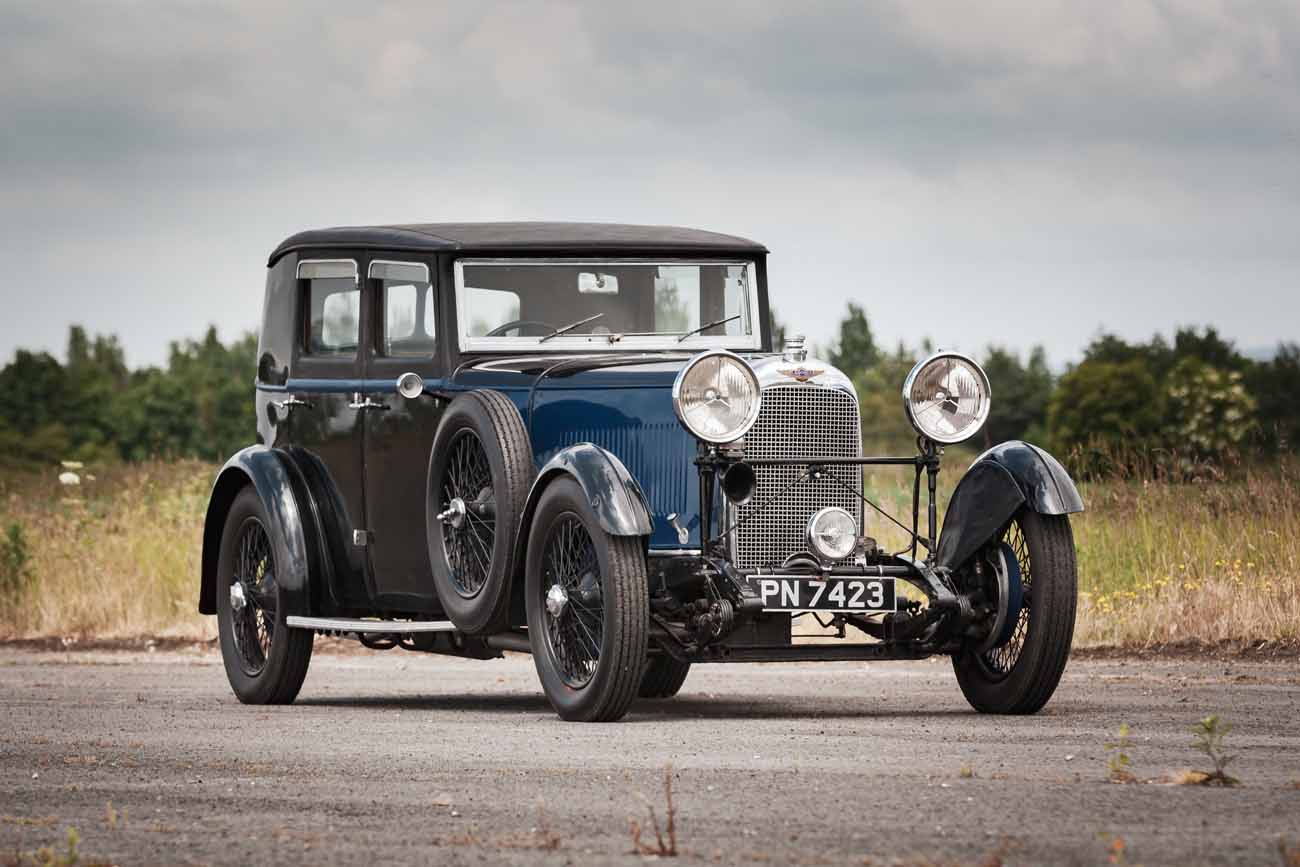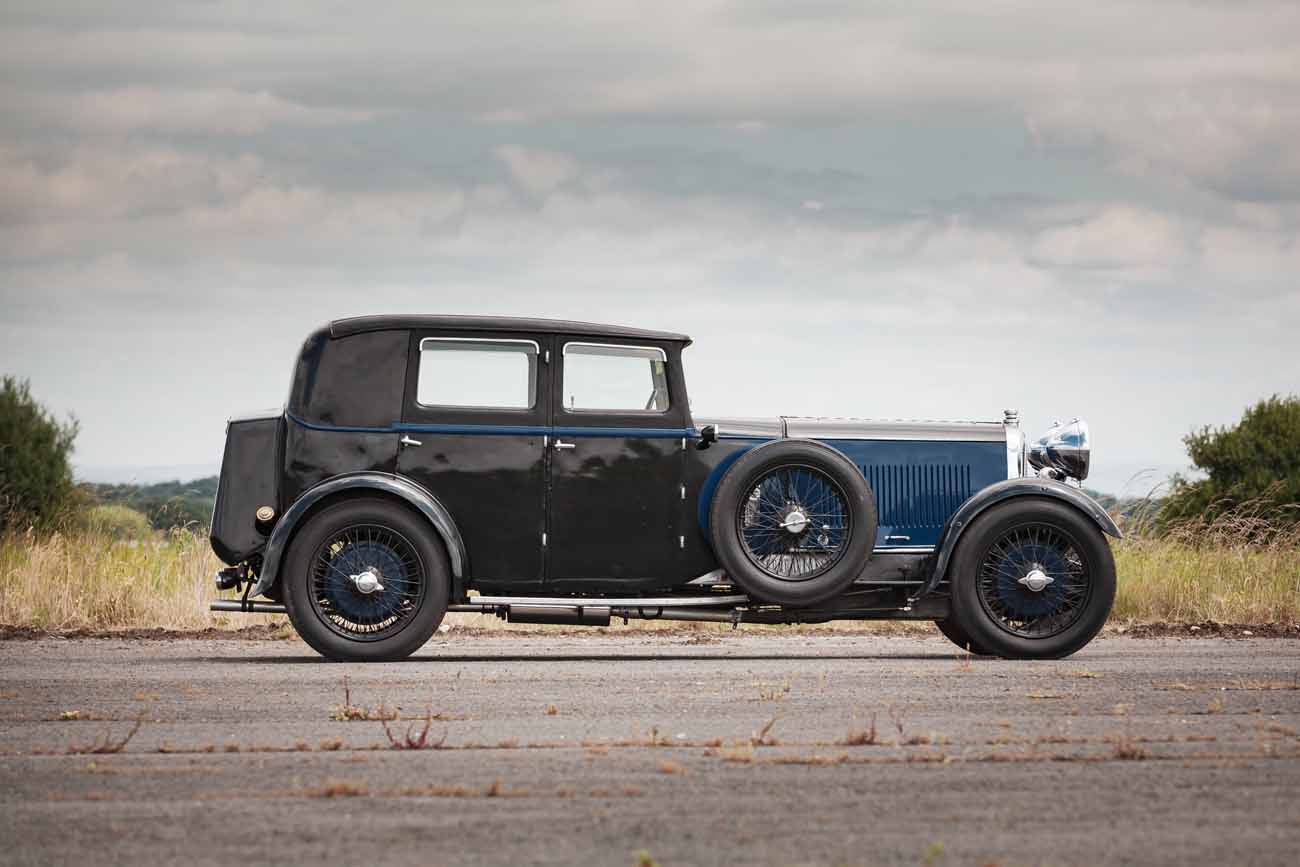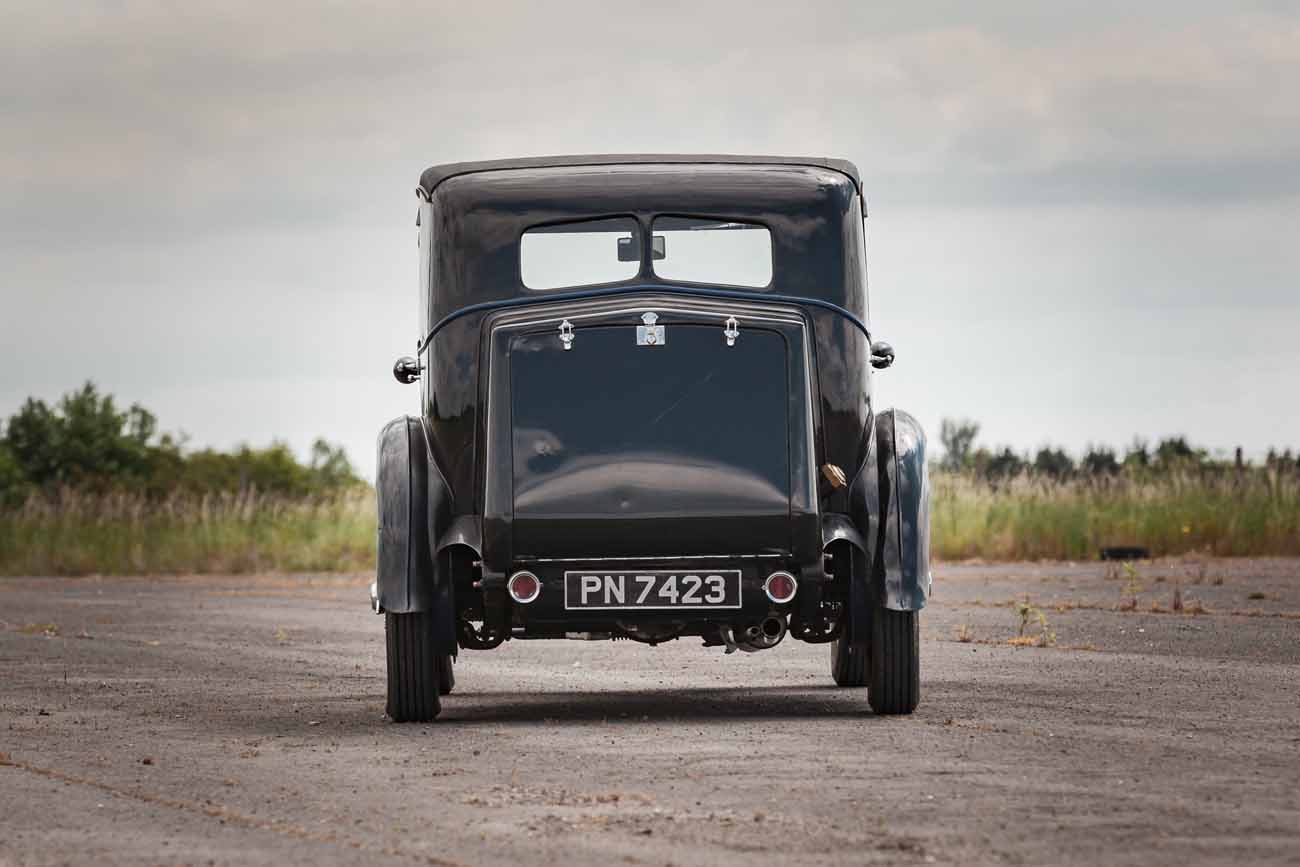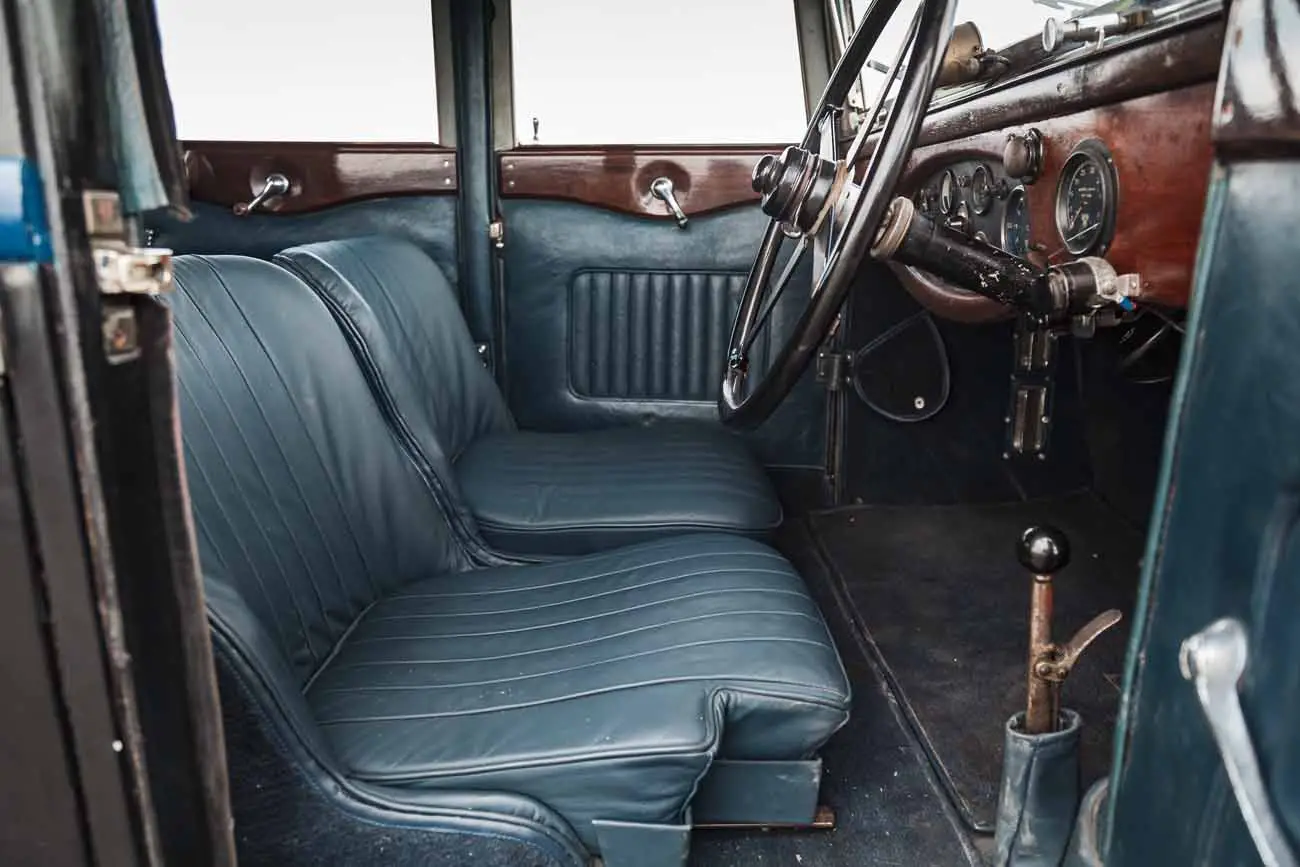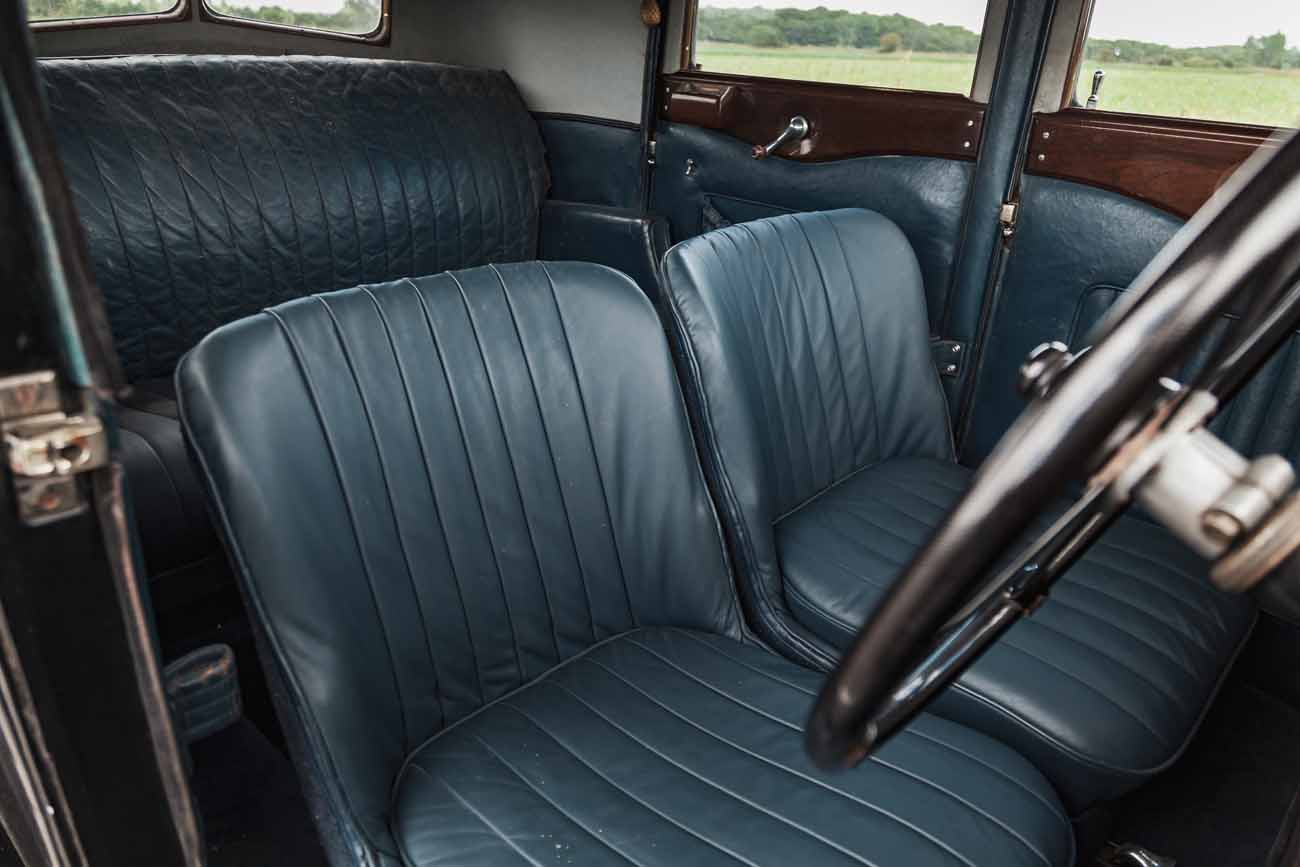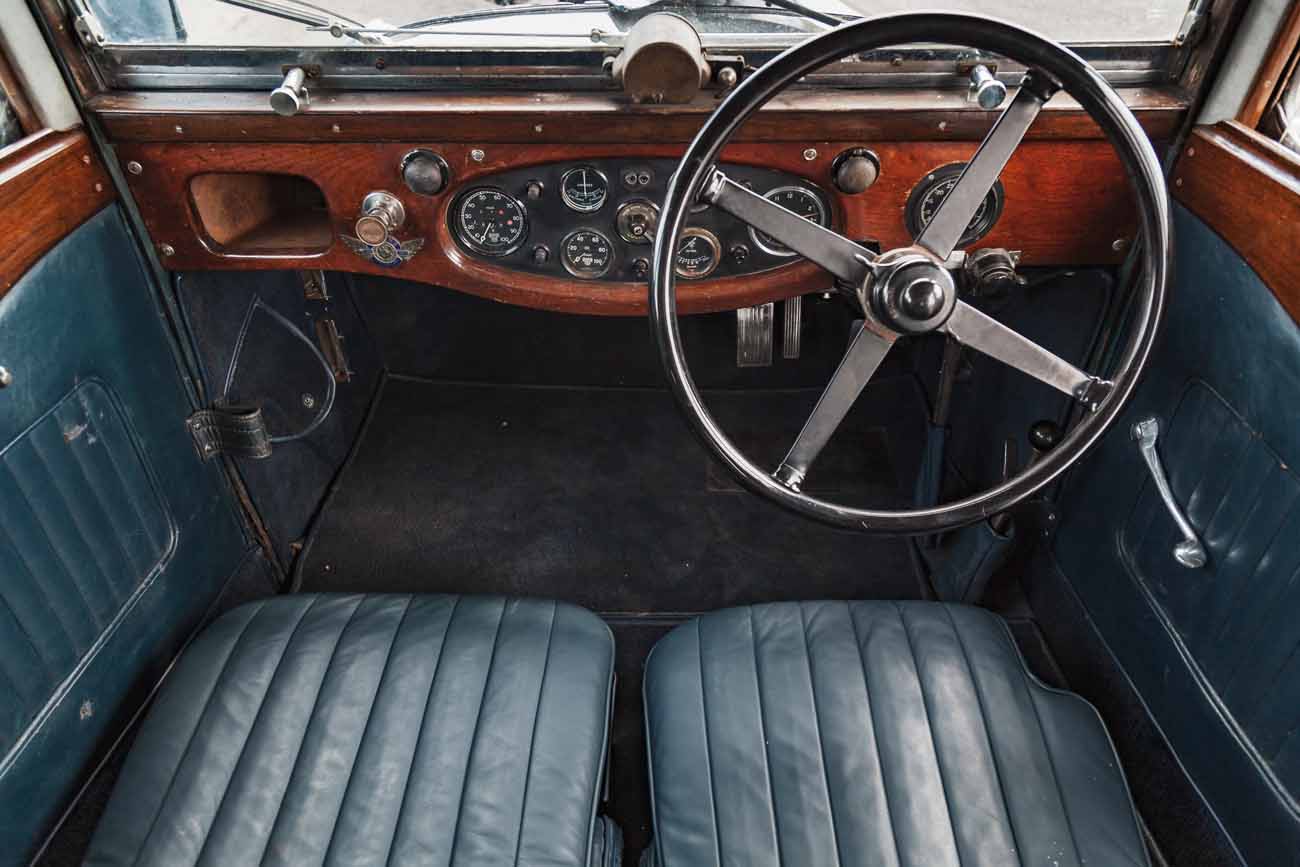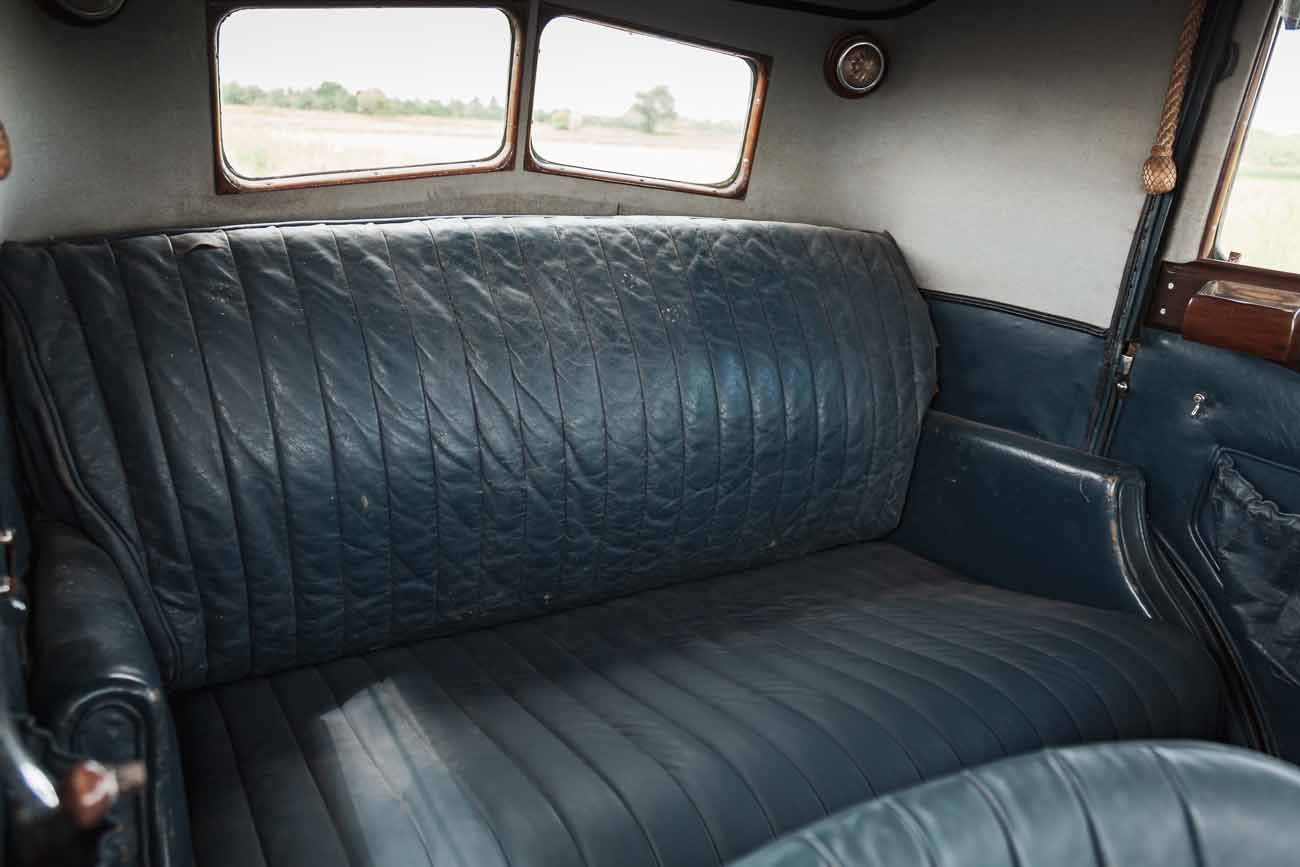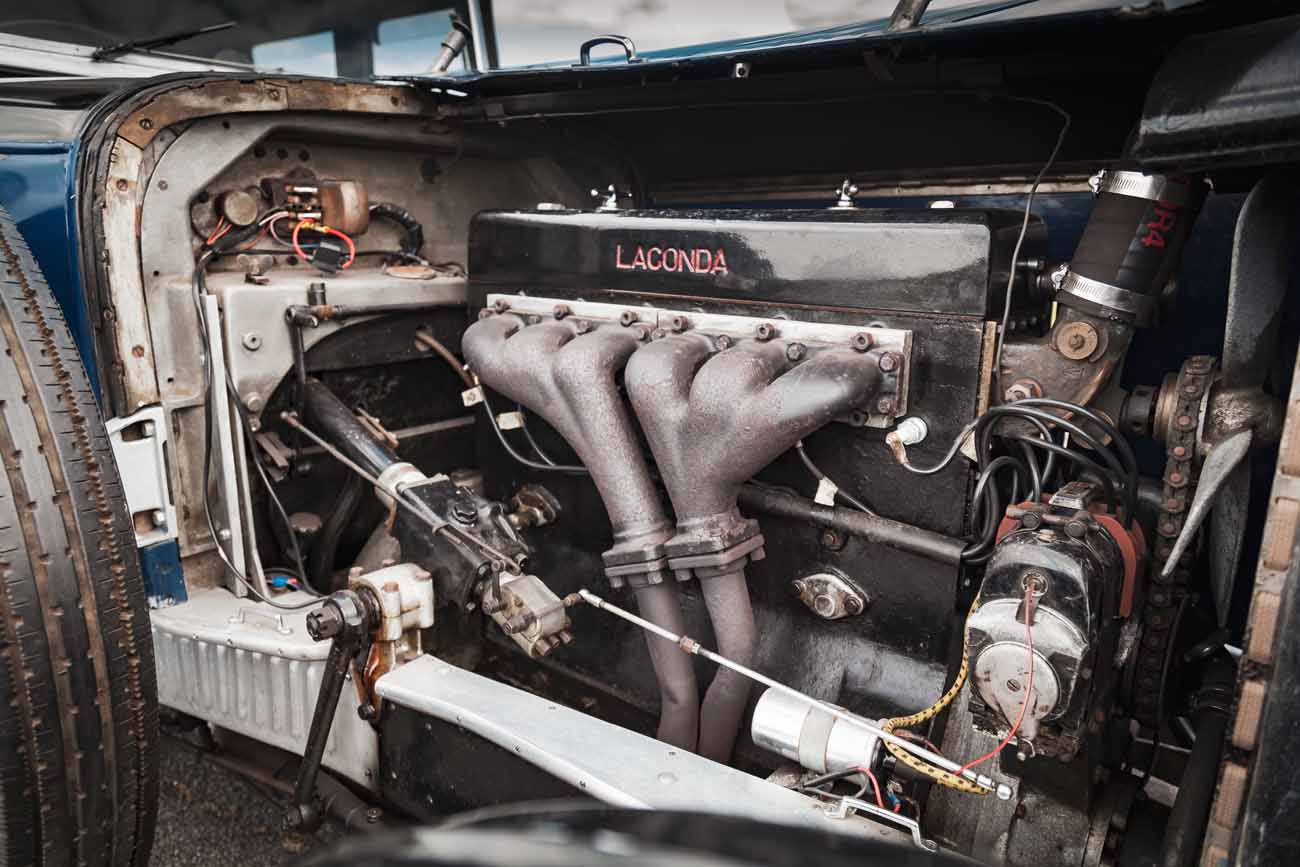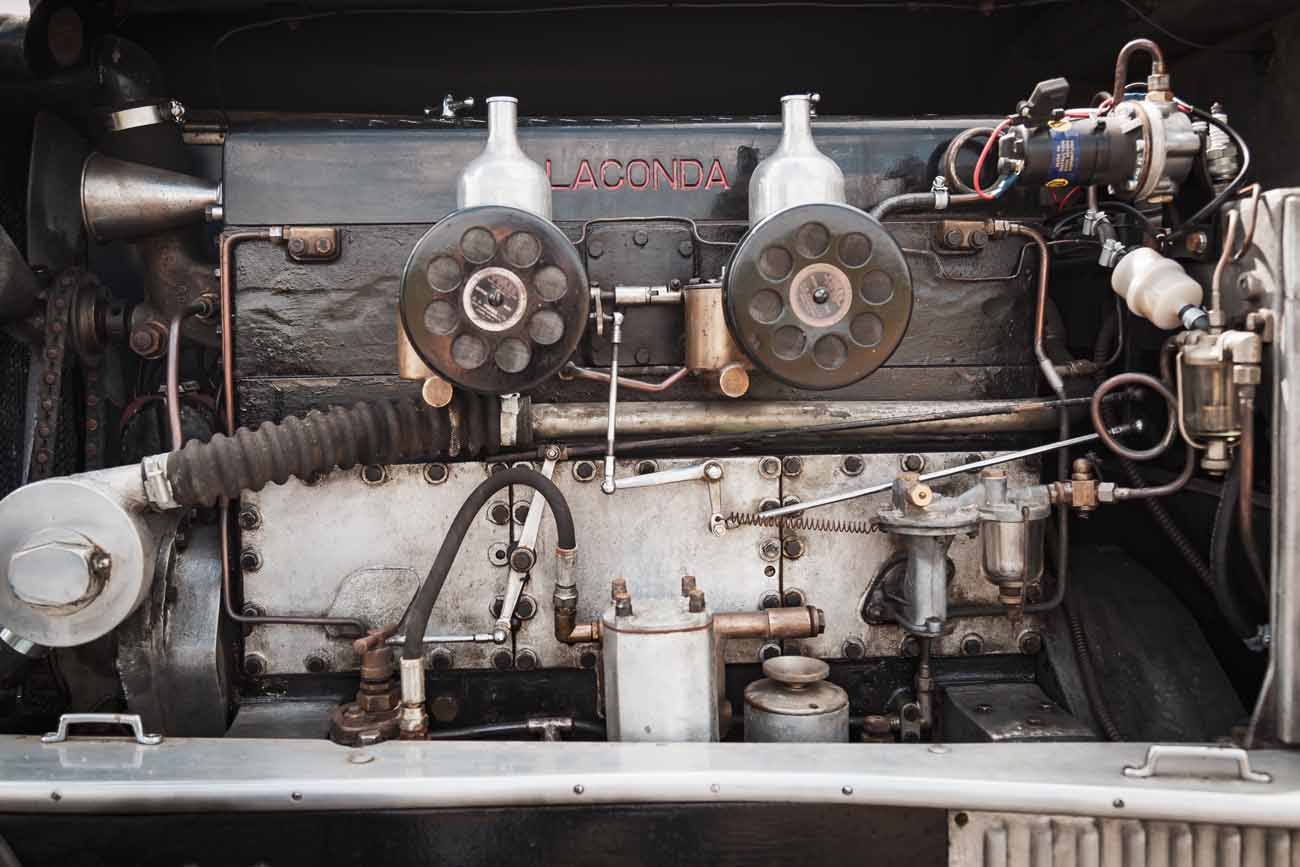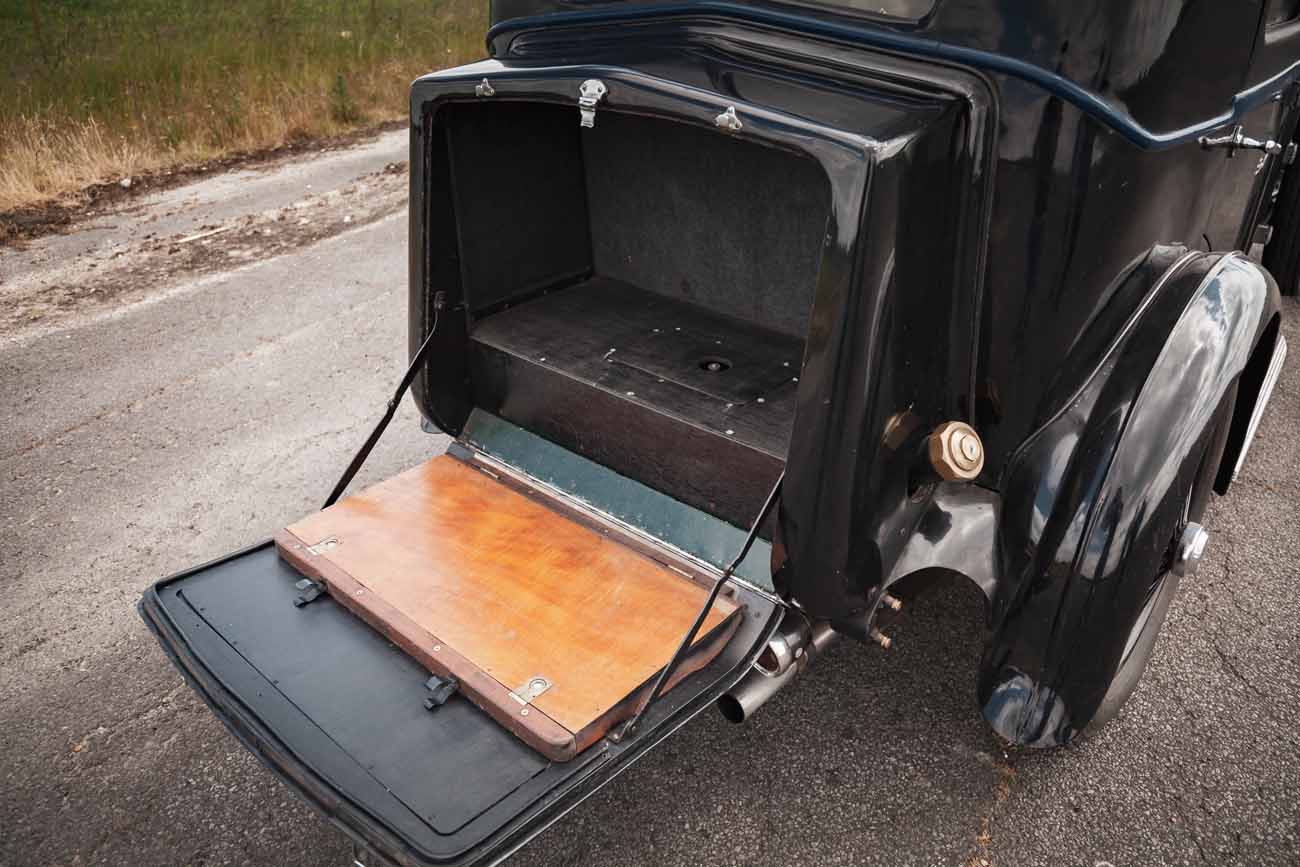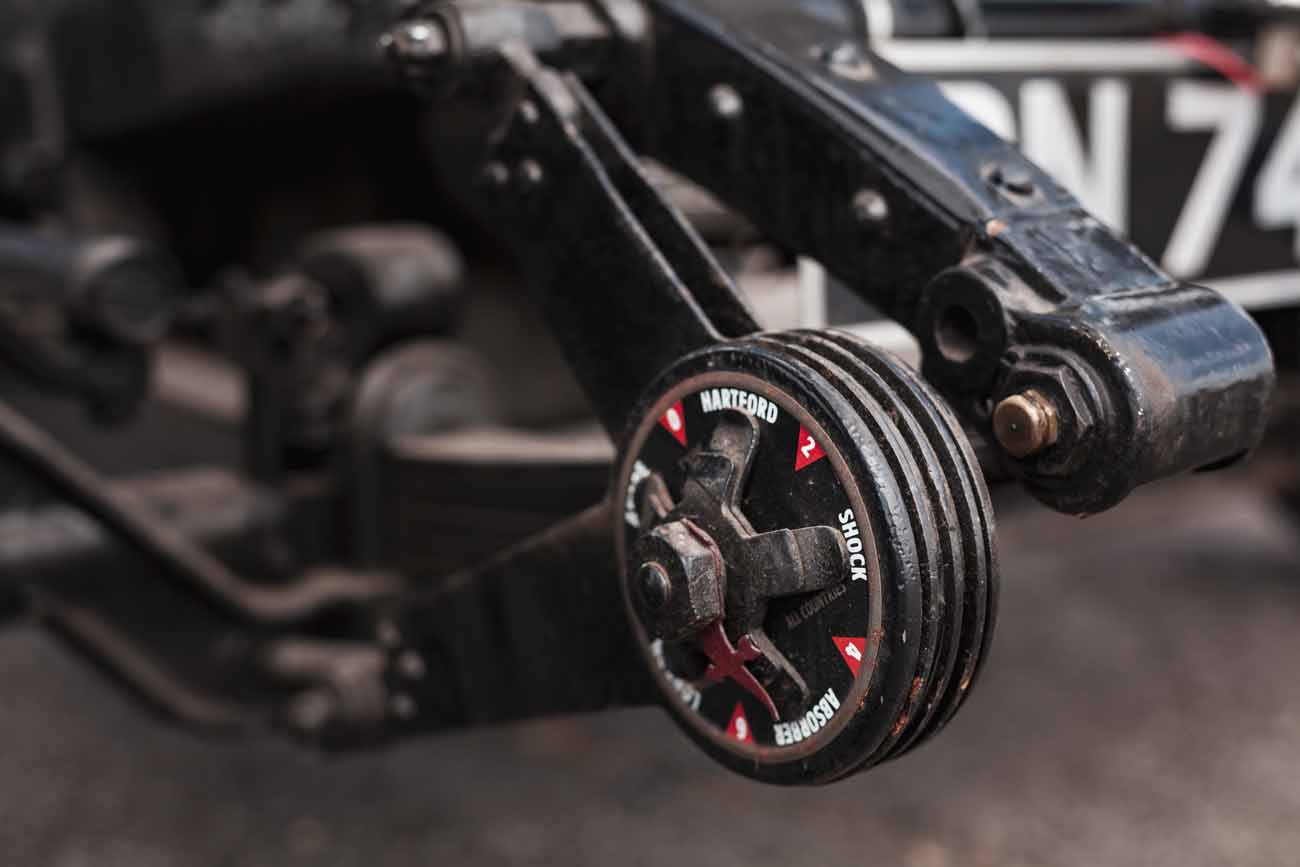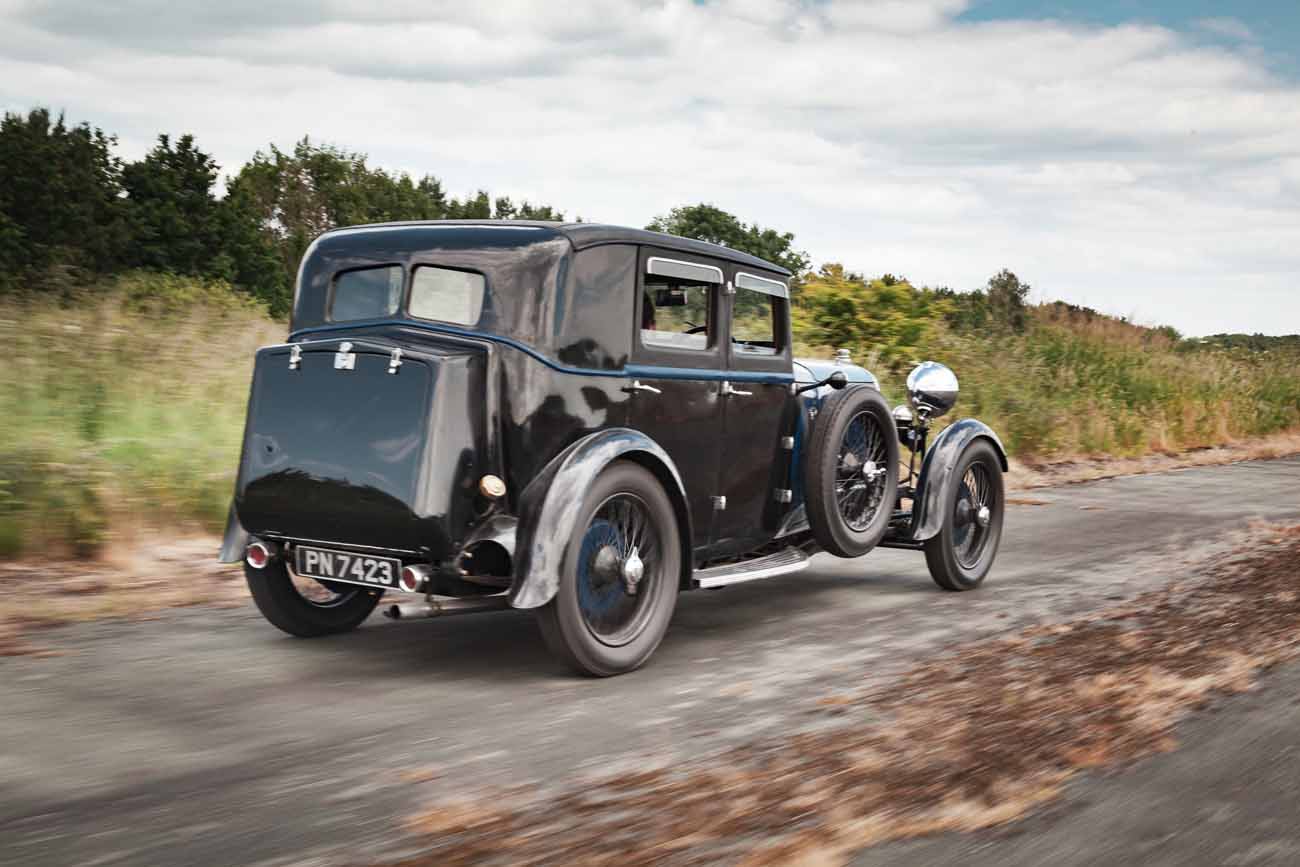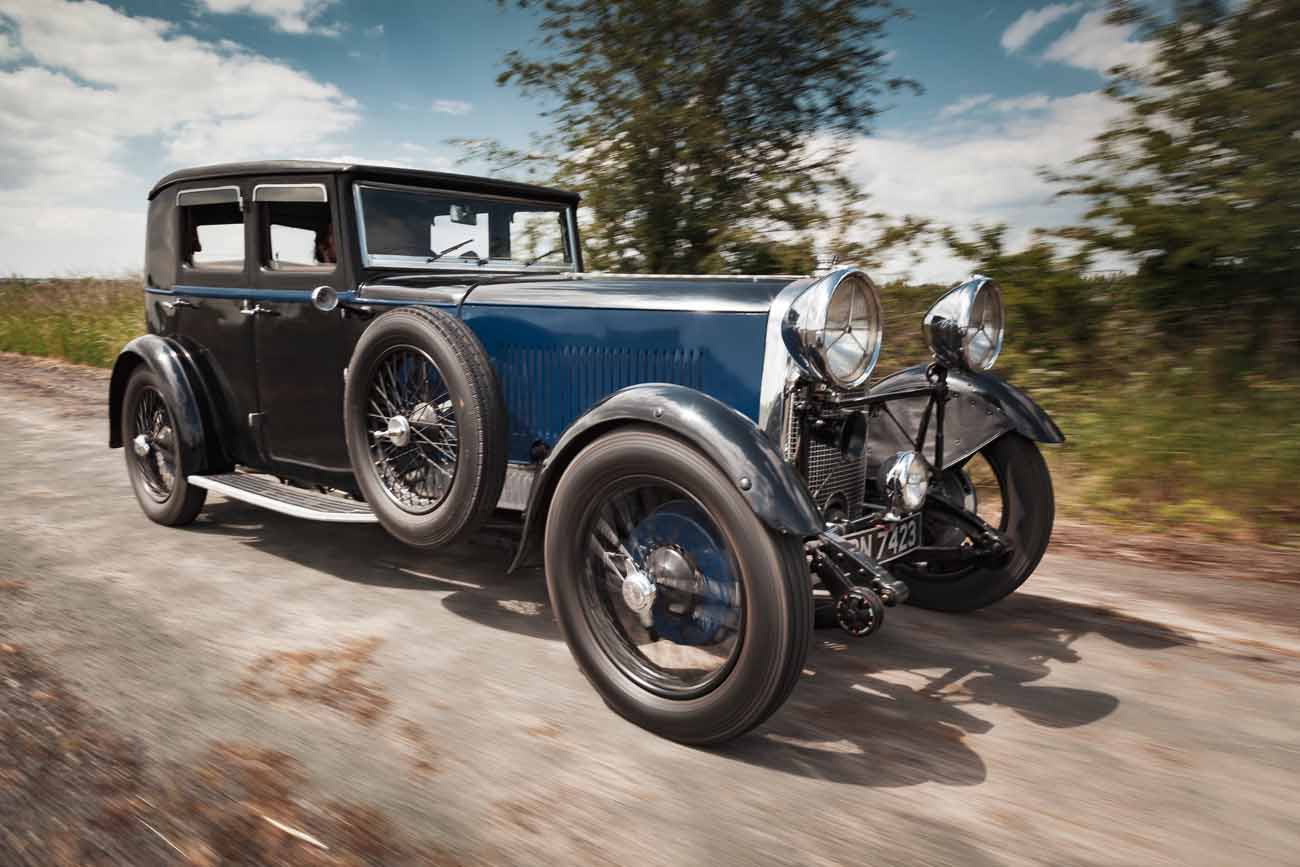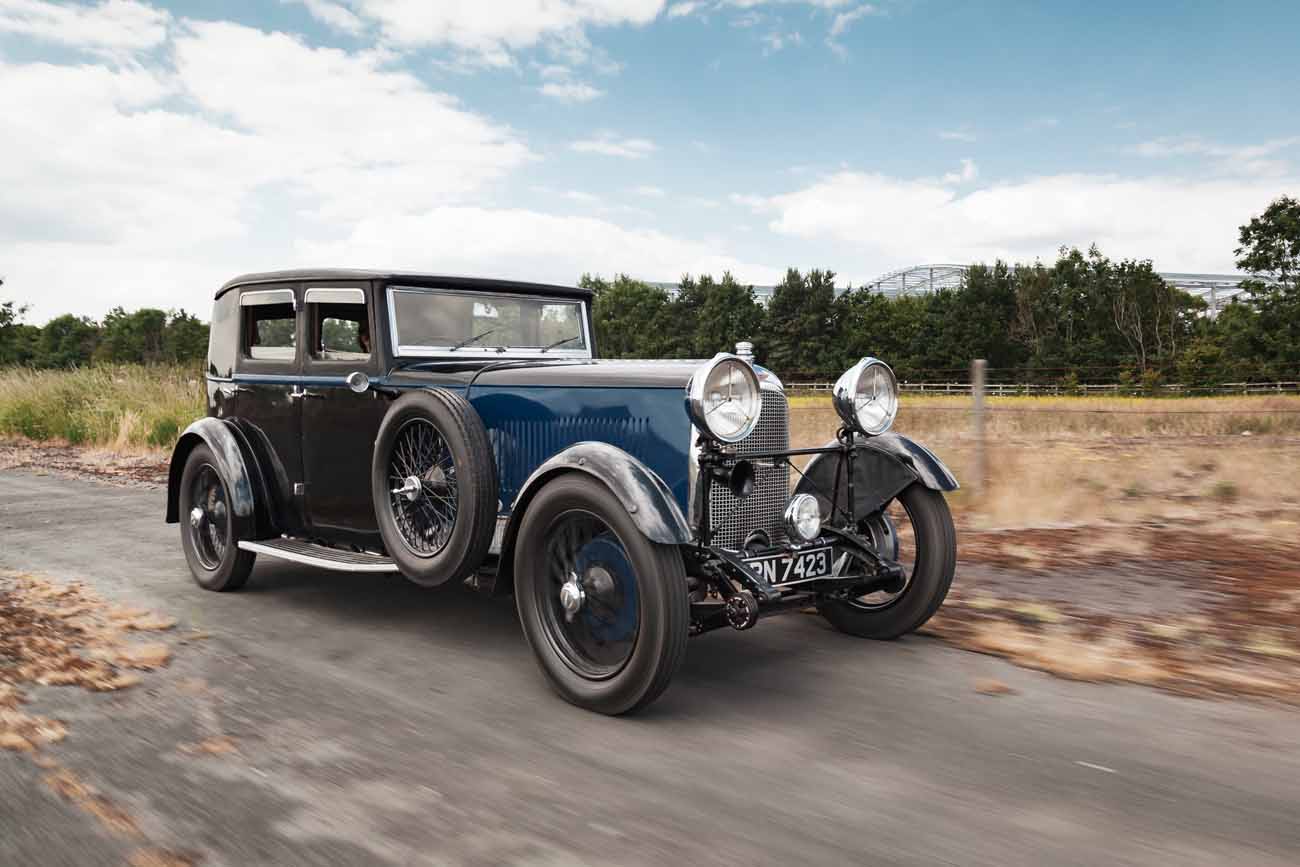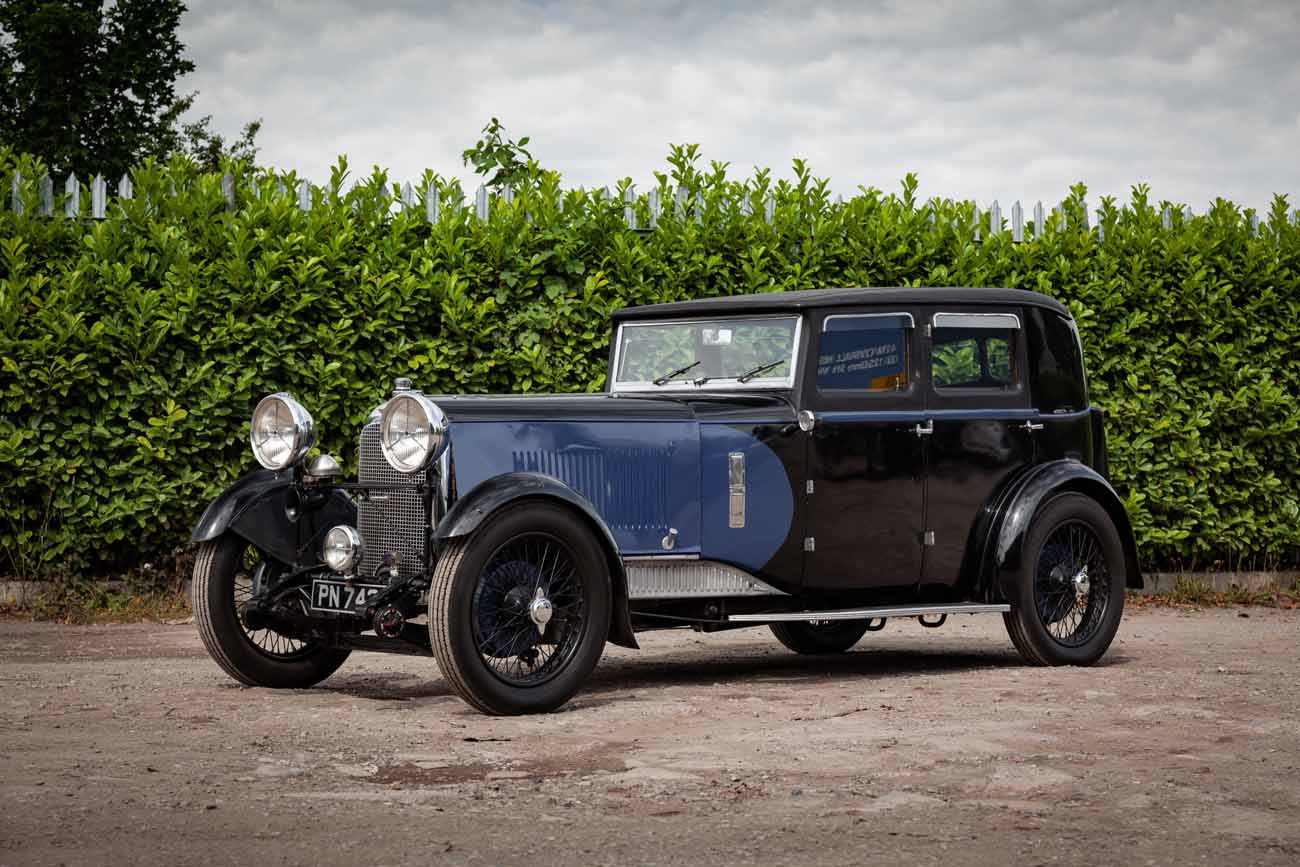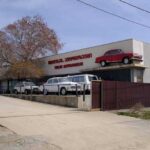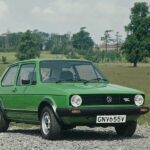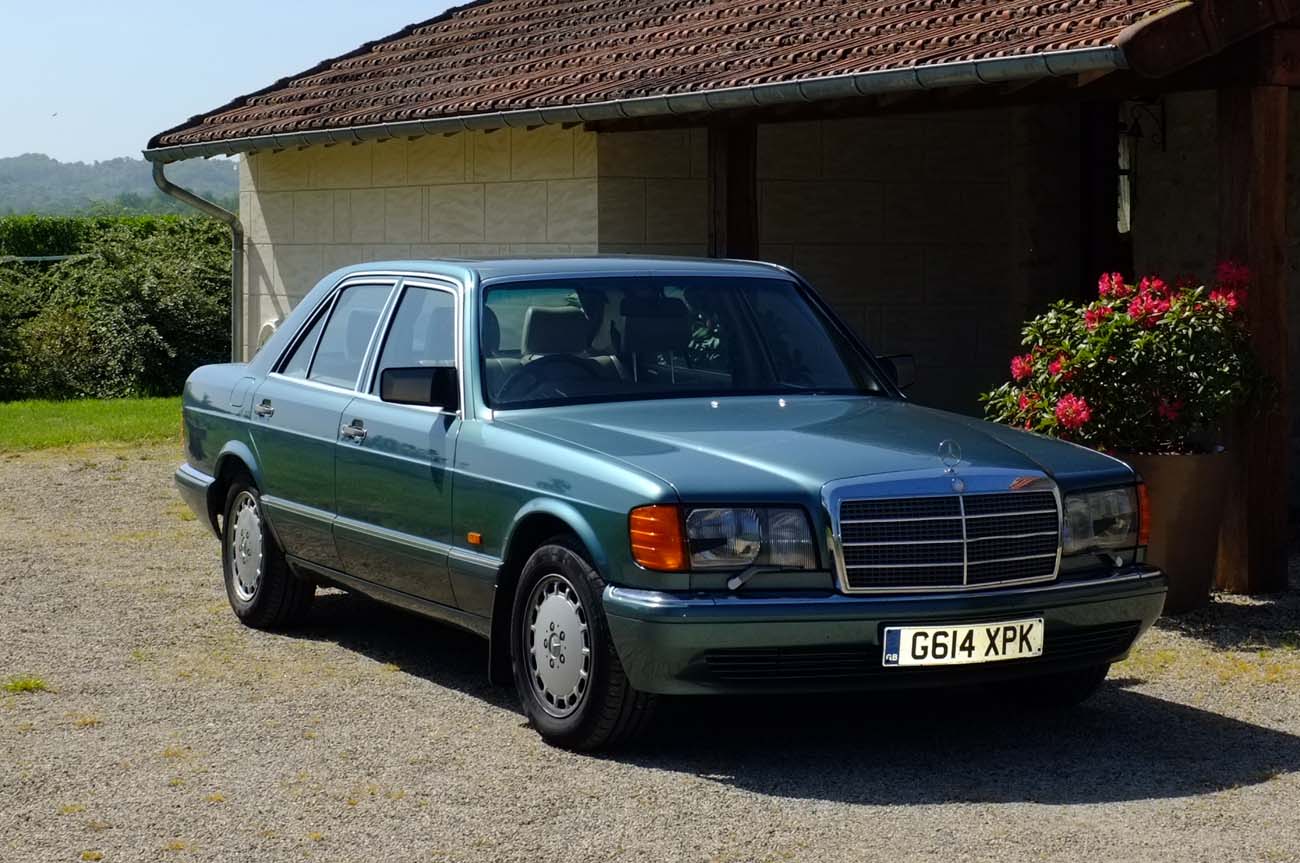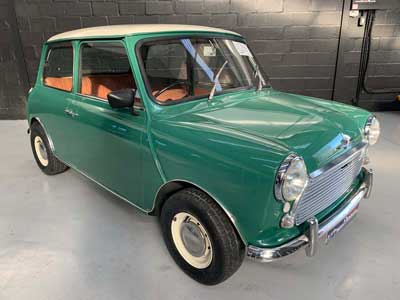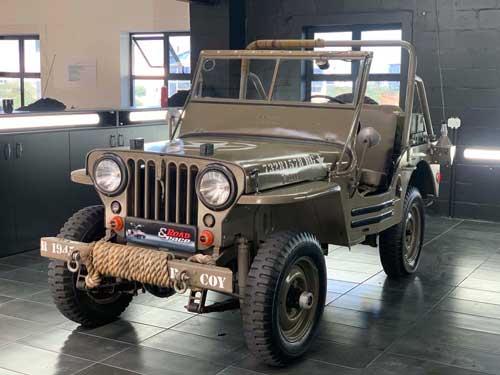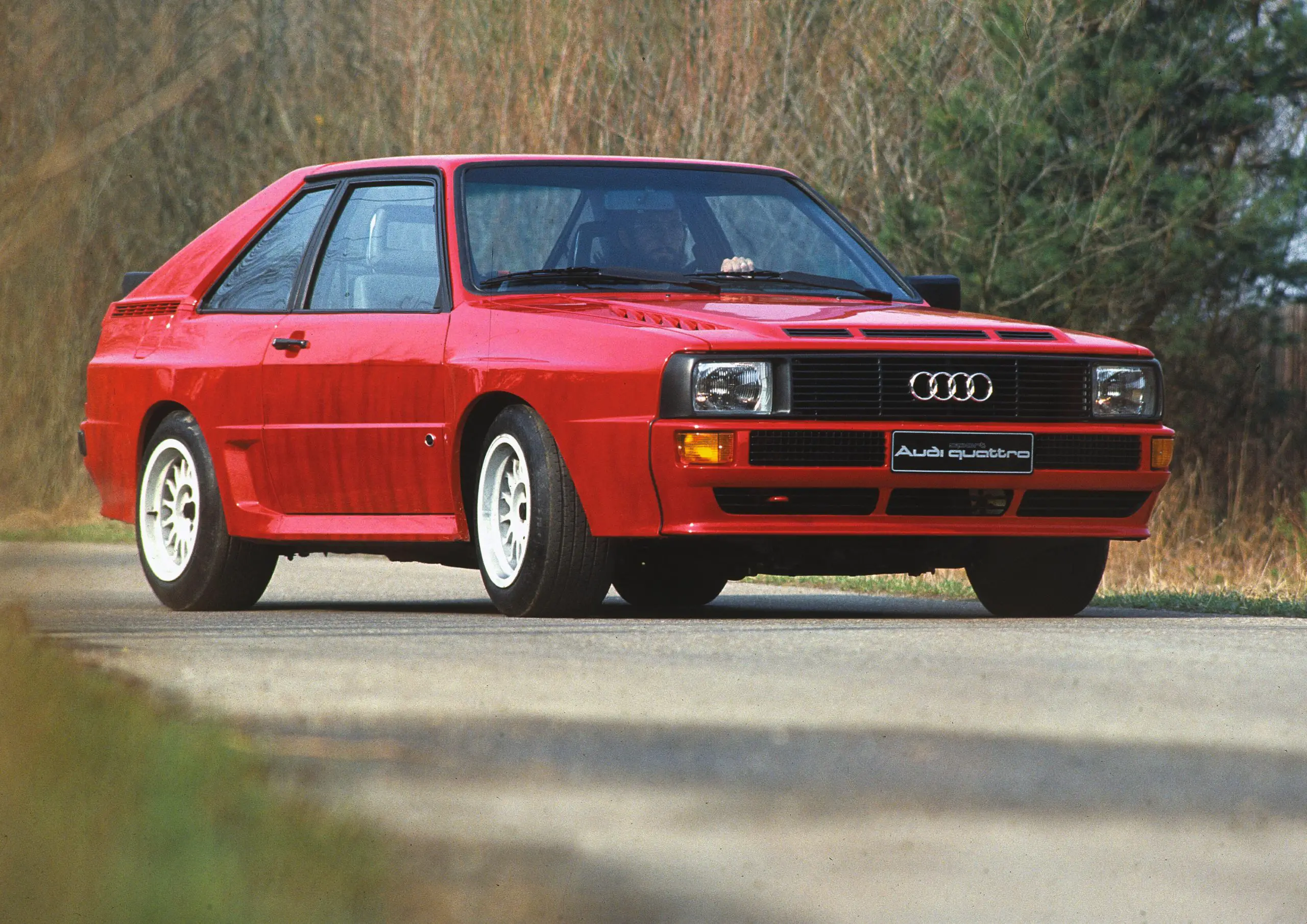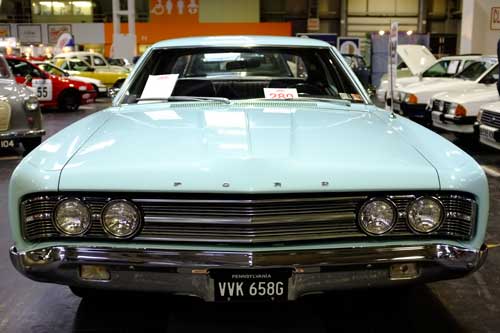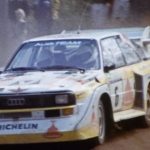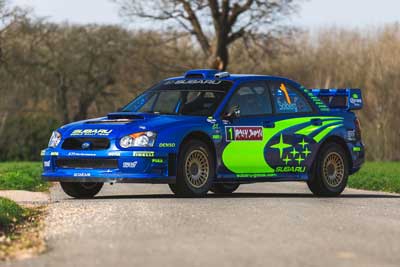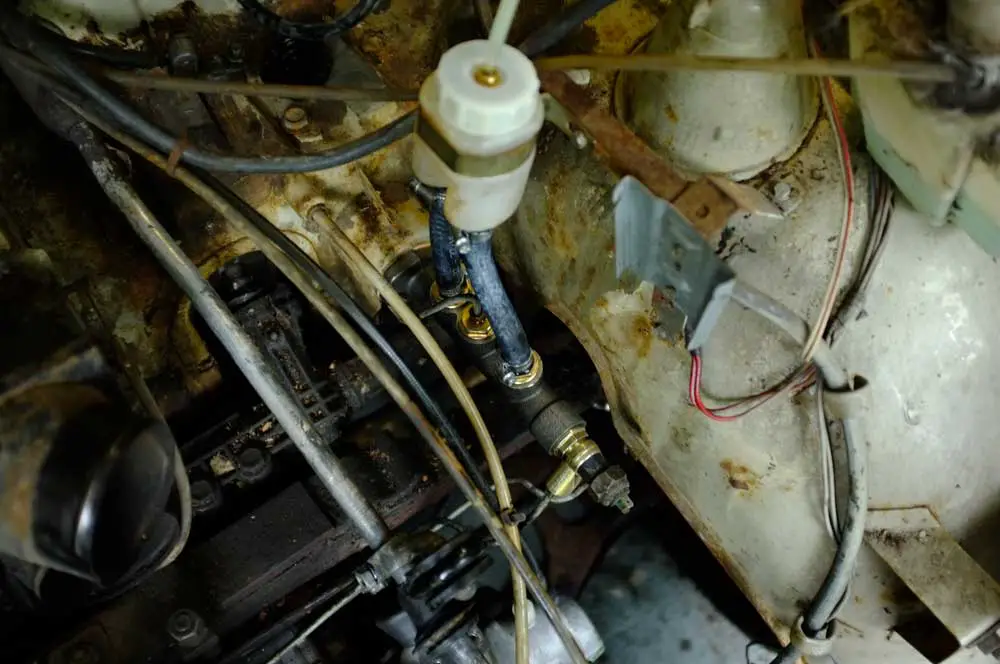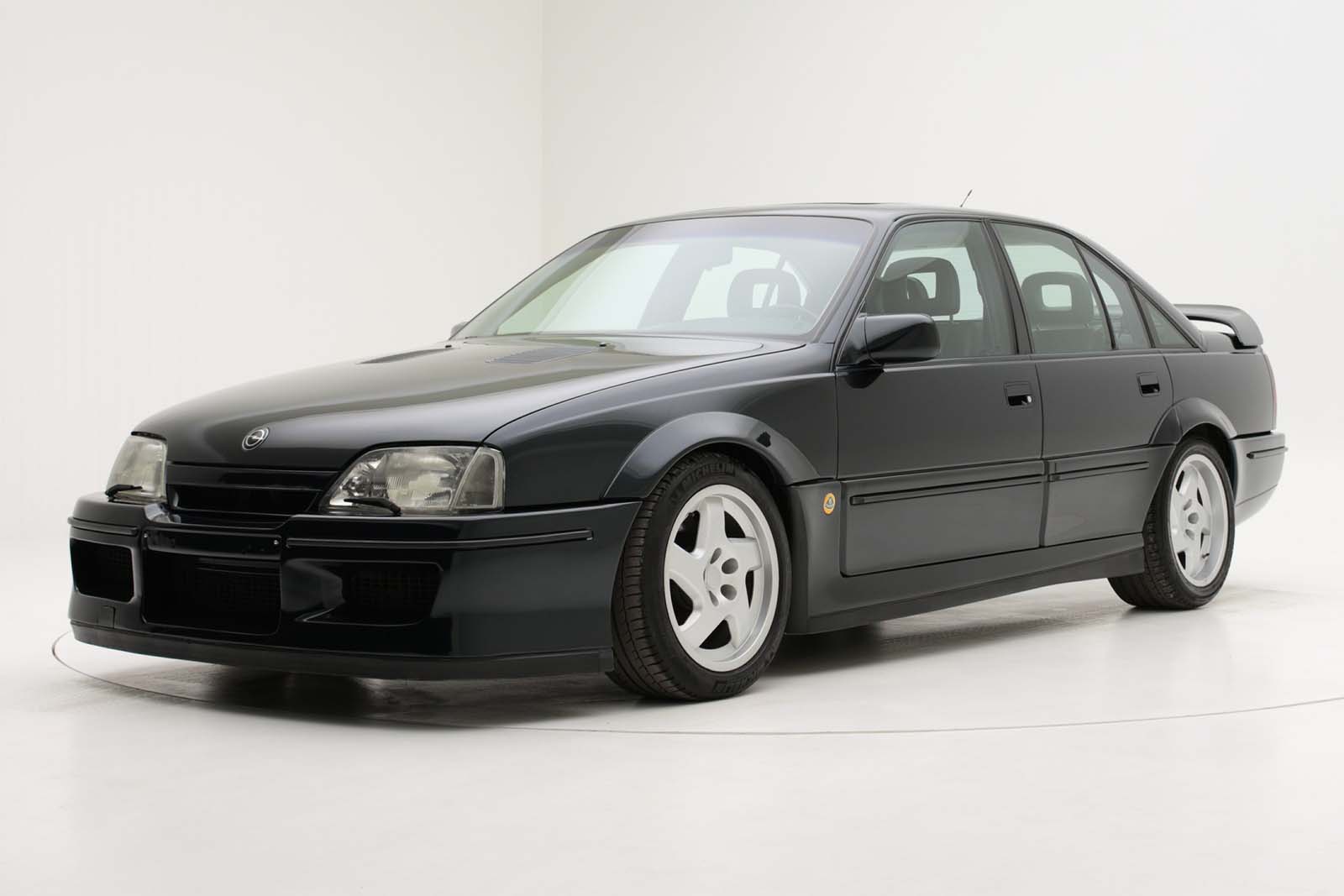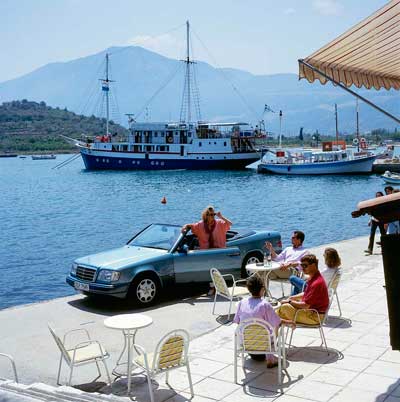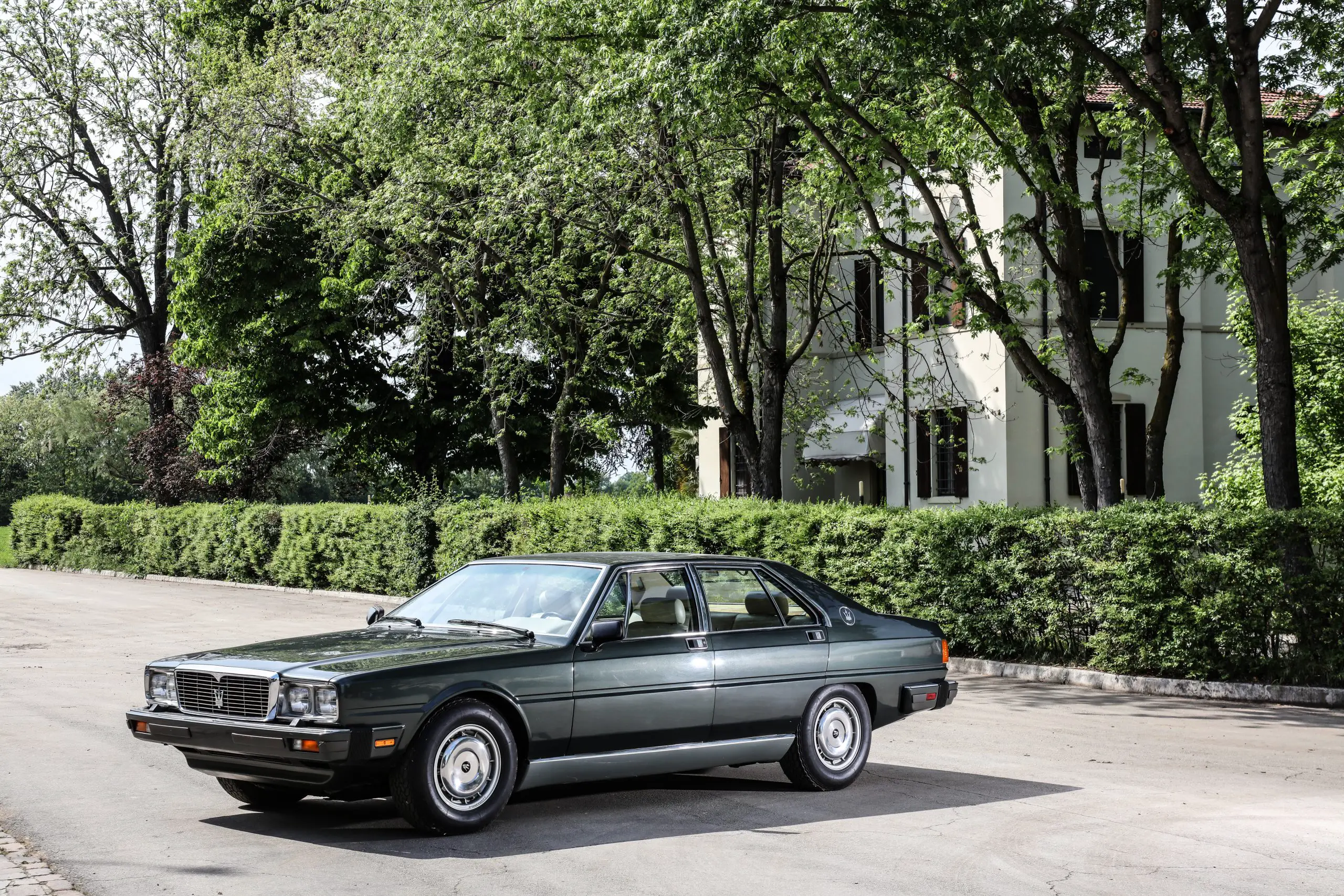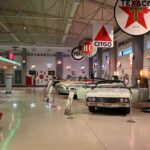
1931 Lagonda 3 Litre Low Chassis Tourer At Auction
H&H have a 1931 Lagonda 3-Litre Low Chassis Saloon in their imminent auction at the Buxton Pavilion Gardens on Wednesday 7th July 2021.
The car was formerly part of the Lichfield collection, one of Britain’s most significant private collections of pre-war cars and motorcycles.
Lagonda are one of the most revered names in automotive history. All the best things about British engineering are encompassed in one of their cars.
Strange then it was founded by American opera singer Wilber Gunn. He realised his talents lay elsewhere, good job too. in 1906 he left the world of performance and with some help he marketed a motorcycle using the Lagonda brand. The name comes from a creek in his native Ohio, but the factory was in Staines, Middlesex, England.
From there he moved into car production and quickly Lagonda gained a reputation for quality. This was further helped by winning the Moscow to St. Petersburg trial of 1920 with a 20hp six cylinder Torpedo. This impressed Tsar Nicholas II and opened the door to a very lucrative Russian market until the war in 1914.
Lagonda mainly focussed on producing light cars before moving up to sports and luxury models by the mid-1920s. The 14/60 model being the first move in 1925, the company abandoning the in unit gearbox for a mid-mounted transmission. However, the greater technical interest was in the engine.
Aurthur Davidson designed the 2.0 litre four cylinder which featured twin camshafts mounted high in the block. The valves were set inclined in a hemispherical combustion chamber in the head.
The power output was a decent 60 hp and an even lighter and more powerful Speed Model was available from 1927 with 80 hp. The 14/60 was the dropped. The following six cylinder was less adventurous when developed for the 16/65 model.
The new six was originally 2,692 cc, later enlarged to 3,183 to create the 3 Litre model of 1928. The engine featured seven bearings for the crankshaft and overhead valves.
The short lived 3 1/2 Litre used a further enlarged version of the engine with 3,619 cc.
By then Meadows designs had replaced the Davidson designed units by 1934 and were seen as being the way forward.
Many Lagondas, the early 3 Litre and 16/65 used the Weymann system of flexible frames with fabric covered coachwork which was typically intended for carriages.
Beginning in 1929 Lagonda introduced the Low Chassis, a new frame that resulted from the companies racing activities. Testing a 3 Litre Lagonda in 1929, The Motor said it was ‘difficult to imagine a car nearer an ideal than one which combines the full performance of a speed model with the top gear performance of the best modern touring car.’
The engine was a flexible unit, being able to accelerate from 5 mph to the top speed of around 80 mph in top gear.
Motor Sport declared the 3 Litre Lagonda as ‘a very pleasant car of very high quality and possessing that indefinable but very definite character which stamps the thoroughbred in every walk of life.’ High praise indeed.
This 3-Litre Lagonda was introduced to the Litchfield Collection in September 1981, having previously belonged to one John Edwin Fletcher, of Bredons Norton, Gloucestershire.
Bearing the chassis number ‘Z9861’ it is currently panelled in metal, although Lagonda Club records show originally the coachwork was the semi-fabric-covered type. The upper sections of the doors still have this material.
The Lagonda Club know this car from 1967 when it belonged to MR Jones in Llanelli and was last recorded as being owned by E R Lonergan of Plymouth in 1974. the car being sold at auction in 2008 and bought by Yorkshire collector Stan Cale. After his passing in 2013 the car stayed in a non-running state and was left to his son Andrew.
Restorer Bob Fenton in Wakefield was responsible for bringing the car up to the condition you see today at a cost in excess of £29,500. The restoration included the removal of most of the drivetrain, freeing off the engine which had seized and getting the car back into running order. An overhaul of the braking system was needed along with some attention to the electrical system, the paintwork and wheels and tyres.
Even though the Lagonda has stood for six years it started, ran and drove as you can see in the video at the bottom.
The car appears to be quite usable though will require further recommissioning work before it is ready to go back on the road. It still retains some imperfections to the paint and upholstery too, but this doesn’t detract from the appeal. This is a great example of a post vintage thoroughbred and one of the most attractive cars of the period.
The car is offered for sale with a current UK V5 registration document and one MOT from 1981.
Offered with a guide price of £48,000 – £55,000, the Lagonda can be bought online or in person in Buxton.
The vendor described the car’s condition as follows:
Vendor Condition Ratings:
Bodywork: ‘Good’
Engine: ‘Good’
Electrical Equipment: ‘Good, but could benefit from some tidying’
Paintwork: ‘Average, retaining much of what is believed to be the original factory finish’
Gearbox: ‘Good’
Interior Trim: ‘Highly-original, with some re-trimmed components’
If you want to buy the car then register quickly here: H&H Pavilion Gardens Auction, Buxton
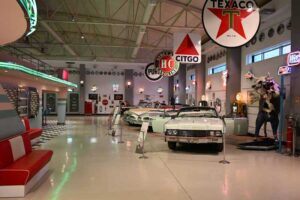
Ural Ataman Classic Car Museum – Istanbul, Turkey
This has to be one of the nicest private collections I have seen, the Ural Ataman Museum in Istanbul, turkey has not only a wide
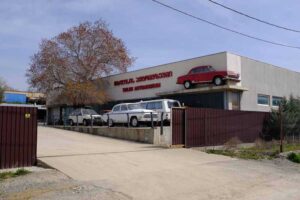
Tbilisi AutoMuseum Car Museum – Georgia
You may not have heard of this, but the small car museum in Tbilisi Georgia really has quite a lot to see. Buried in an
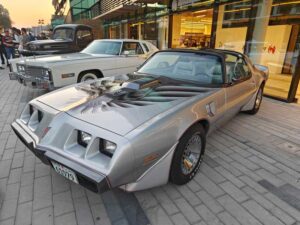
Bahrain Bike Week Classic Car Show December 2024
Bahrain Bike Week is the biggest event of its kind in the Middle East and the 2024 one was no exception. It’s not just the
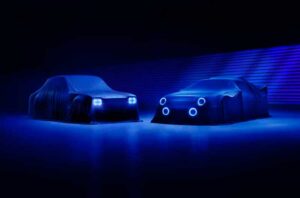
Ford Motor Company Bring Back Group 5 Mk1 Escort & Group B RS200 With The Help Of Boreham Motorworks
Ford have granted a licence to Boreham Motorworks, a division of the DVRN Automotive Group, to produce new versions of not just the Mk1 Escort
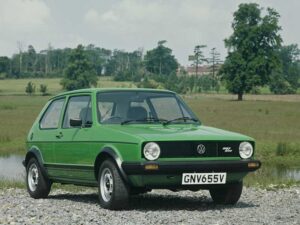
The VW Golf At 50 Years Old
Europe’s number 1 selling car the VW Golf has reached 50 years old this year, starting production on the 29th of March 1974. In
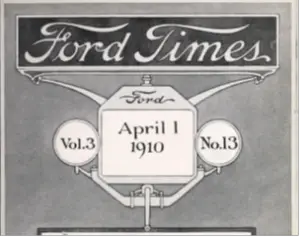
Ford’s Heritage Vault Makes The Ford Times Magazine Available To The Public
Ford’s expansion through the early 20th century was something to behold, the rapid growth of the company and the success of the Model T led
